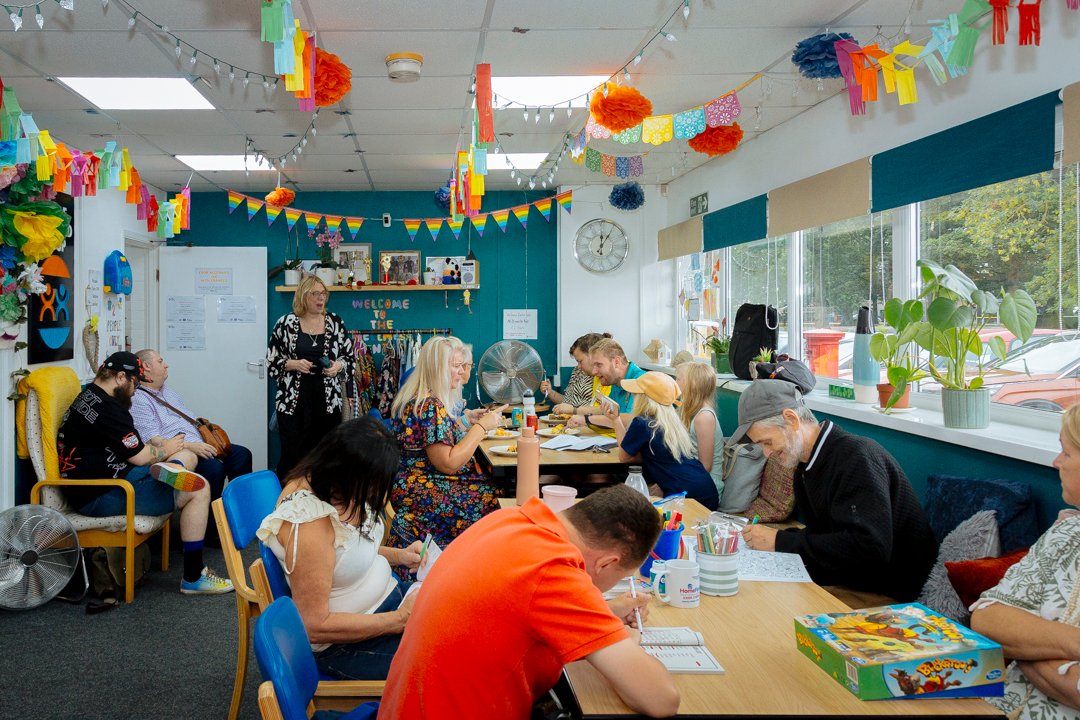
Strengthening the social safety net
Everyone should have someone and somewhere to turn to when times are hard. That is what we refer to as the ‘social safety net’.
A support system under pressure
The worst-off neighbourhoods are being left behind, as the income gap to the richest neighbourhoods has grown. Between 2011/12 and 2017/18 the increase in average incomes in the least deprived neighbourhoods was one third bigger than in the most deprived (JRF analysis of ONS income estimates for small areas, England and Wales and the Index of Multiple Deprivation).
Deepening hardship is evident in the seemingly exponential rise in foodbank use, and a steady stream of new forms of charitable help such as warm spaces, the provision of beds for children, the provision of toiletries and the means of getting online. To cap it all off, the idea of a 'multibank' – one place providing all manner of in-kind material assistance – is now taking off. Such high levels of hardship are contributing to other dire outcomes, such as falling life expectancy in the most deprived areas.
This wall of need is leaving people working or volunteering for charities and community organisations feeling burnt out and exhausted. It also makes it difficult to shift from crisis response mode to prevention and supporting sustained improvements to people’s lives.
This is made harder still by a local public sector that is under serious strain after a decade of cuts – cuts that were the deepest in the most deprived areas. The result has been councils having to protect statutory services (such as adult and children’s services), while cutting more discretionary ones (Hastings et al, 2015; Arnold and Stirling, 2019; Atkins and Hoddinott, 2022). The consequence is the increased targeting and rationing of services.
Failing to grip the problem of deepening poverty drives further demand for more acute services as problems spiral for people and their families. Prevention helps reduce demand on acute services but these services cannot be scaled back in order to refocus on prevention, we need to do something different instead: strengthen our social safety net.
Strengthening the social safety net
Everyone should have someone and somewhere to turn to when times are hard. That is what we refer to as the ‘social safety net’ and it knits together 3 core components:
- Building community power, connection, purpose and relationships, this is the everyday stuff of community life that makes it more likely that life goes well: friendship, a helping hand and mutual aid. It is the infrastructure in neighbourhoods that enables people to find common cause and seek to shape the world around them.
- Emergency and crisis support, such as local welfare assistance, the household support fund, discretionary housing payments and in-kind help from foodbanks or furniture and white goods schemes.
- Practical help and advice to stop problems getting worse and helping people get back on their feet, such as benefit, housing, debt and immigration advice, income maximisation, social prescribing, talking therapies for anxiety and depression, community health and employment support.
The social safety net is a complement to the national social security system on the one hand and specialist public services on the other. It operates where neighbourhood community life and the local state meet.
Meeting community power and connection with a like-minded local state
Relationships between people are fundamental to building community power. The realisation that challenges are shared and that you are not alone is crucial. That begins with people taking an interest in you, who you are, what you need, what you are good at and what you aspire to. This builds networks of human relationships and practical support that make it more likely life goes well. These relationships do genuinely preventative work.
This requires spaces and places for people to meet, and formal and informal organisations and associations to meet with. From this foundation a sense of common purpose, shared priorities, agency, and, ultimately, power, can grow. It also creates the infrastructure for people to participate in local decision-making and co-design services and systems.
Community power is also about reaching outward to shape the world around you, so it requires a like-minded local state. One that places relationships at the heart of what it does: building trust rather than holding people at arm’s-length, focusing on what people need rather than a pre-determined offer, pulling services to people rather than a pass-the-parcel of referrals. Ultimately it requires a local state that is willing to reform so it convenes and directs resources, shaping the local system to protect people from hardship as the first step towards thriving. This means shifting culture and ethos – more relational, human-centred, no wrong-door approaches, with a genuine commitment to building community wealth and power.
Creating the conditions for a stronger social safety net
While the locus of this work is local, to have maximum impact it requires an enabling national policy environment. Read our briefing on how to better equip all areas to respond to hardship and spread pioneering approaches to tackling hardship.
References
Arnold, S. and Stirling, A. (2019) Councils in crisis: local government austerity 2009/10 – 2024/25. TUC. Available at https://www.tuc.org.uk/sites/default/files/2019-09/Local_Government_Austerity.pdf [Accessed: 16 October 2023].
Atkins, G. and Hoddinott, S. (2022) Neighbourhood services under strain: how a decade of cuts and rising demand for social care affected local services. Institute for Government. Available at: https://www.instituteforgovernment.org.uk/sites/default/files/publications/neighbourhood-services-under-strain.pdf [Accessed: 16 October 2023].
Hastings, A. Bailey, N. Bramley, G. Gannon, M. and Watkins, D. (2015). The cost of the cuts: the impact on local government and poorer communities. Joseph Rowntree Foundation. Available at: https://www.jrf.org.uk/report/cost-cuts-impact-local-government-and-poorer-communities [Accessed: 17 October 2023].

This briefing is part of the neighbourhoods and communities topic.
Find out more about our work in this area.
